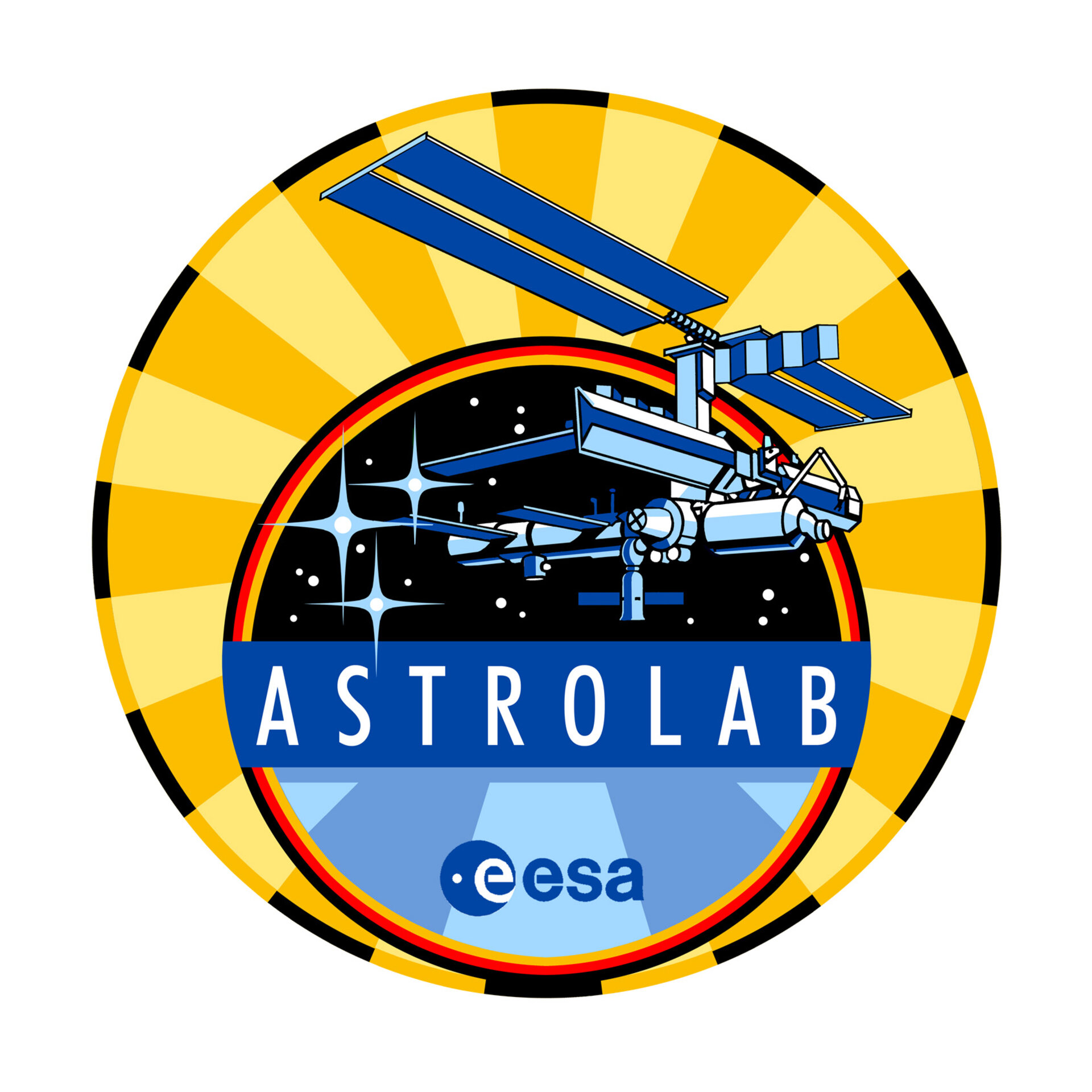Why Astrolab?
Europe's first long-duration mission to the International Space Station was named Astrolab. The name was chosen in memory of Martin Behaim (1459-1507), German cartographer, mapmaker, navigator and explorer. Martin is famous for improving the astrolabe, a tool to predict the position of stars and calculating positions on Earth.
This important navigation instrument was a great improvement on the primitive quadrant then in use for measuring the altitude of the Sun. The astrolabe was used in order to determine location, distance and time. It was this new astrolabe that Christopher Columbus used on his voyage to the Americas in 1492.
Astrolab also refers to ASTROnauts and to LABoratory. This name suggests that the first long-duration mission of a European astronaut on the International Space Station is describing the navigation path for the utilisation of the Columbus laboratory in future exploration.
The mission logo
The principal form in the logo comes from two circles, with the outermost circle split into 24 sections. This portrays the form of an astrolabe. The border of the innermost circle takes its colours from the German flag, highlighting the nationality of ESA astronaut Thomas Reiter.
The destination of the long-duration mission, the International Space Station, is shown as a central symbol in the logo. This is framed by two sets of stars. The three bright stars to the left symbolize the three members of Expedition 13 crew. The 17 smaller stars in the background represent the ESA Member States.















 Germany
Germany
 Austria
Austria
 Belgium
Belgium
 Denmark
Denmark
 Spain
Spain
 Estonia
Estonia
 Finland
Finland
 France
France
 Greece
Greece
 Hungary
Hungary
 Ireland
Ireland
 Italy
Italy
 Luxembourg
Luxembourg
 Norway
Norway
 The Netherlands
The Netherlands
 Poland
Poland
 Portugal
Portugal
 Czechia
Czechia
 Romania
Romania
 United Kingdom
United Kingdom
 Slovenia
Slovenia
 Sweden
Sweden
 Switzerland
Switzerland


























